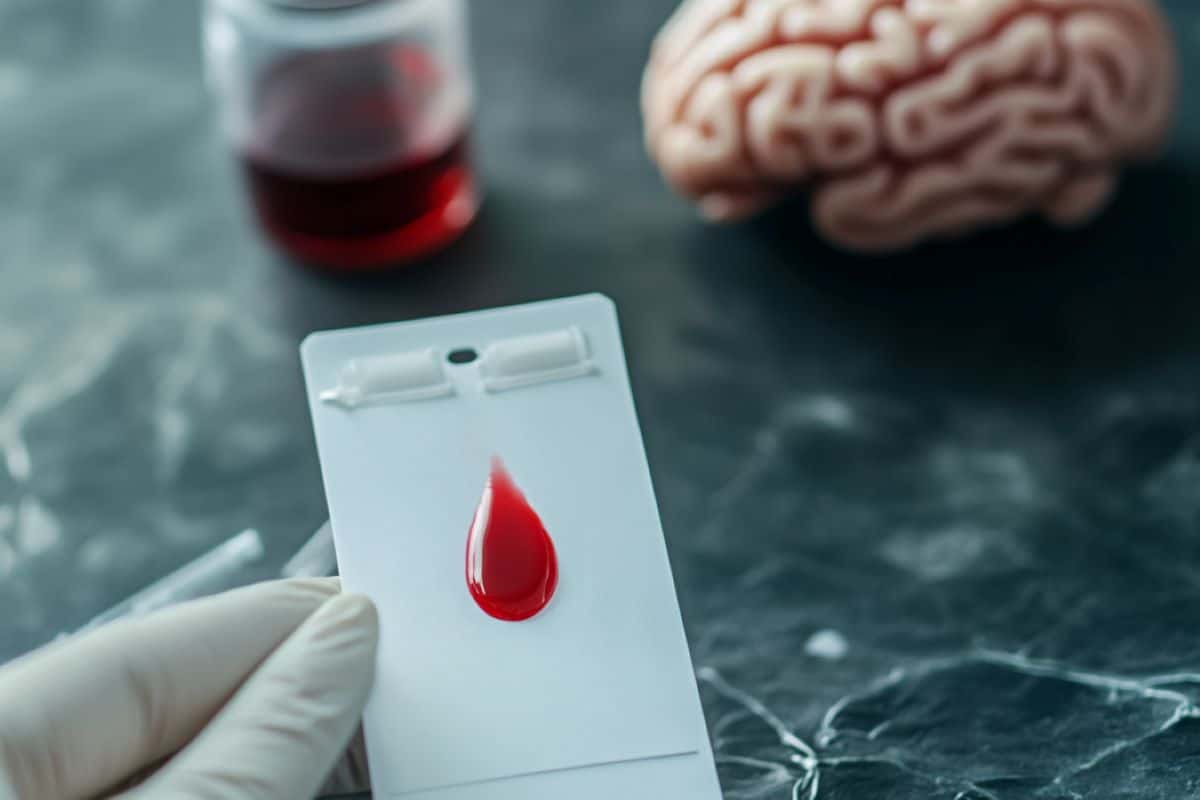With this your competent? doctor can implement the EXACT DEMENTIA PROTOCOLS as soon as this diagnosis comes in. At least if you have a competent doctor! Do you have one? NO? RUN AWAY!
With your chances of getting dementia post stroke, you need prevention solutions. YOUR DOCTOR IS RESPONSIBLE FOR PREVENTING THIS!
1. A documented 33% dementia chance post-stroke from an Australian study? May 2012.
2. Then this study came out and seems to have a range from 17-66%. December 2013.`
3. A 20% chance in this research. July 2013.
4. Dementia Risk Doubled in Patients Following Stroke September 2018
The latest here:
Finger-Prick Test Brings Alzheimer’s Detection Closer to Everyone
Summary: A new Alzheimer’s test collects just a few drops of blood from a finger prick, which can be mailed to a lab for analysis. The test measures biomarkers like pTau217 and has shown similar accuracy to traditional venous blood sampling.
Unlike conventional methods, this approach doesn’t require cold-chain transportation, making it highly accessible for regions with limited infrastructure. With early detection critical for treatments like lecanemab, this test could revolutionize Alzheimer’s diagnosis and research accessibility worldwide.
Key Facts:
- The finger-prick test for Alzheimer’s biomarkers is nearly as accurate as venous sampling.
- Blood samples are mailed to labs without requiring specialized transportation.
- Early detection is key for effective treatments and expanding global research.
Source: University of Gothenburgh
A quick finger prick and a few drops of blood on a card that can be sent in regular mail. This approach could soon make Alzheimer’s testing much more accessible worldwide. A European study led by researchers at the University of Gothenburg, Sweden, is paving the way for this method.
The biomarkers measured in this test have been developed over a long period and have shown strong performance – initially in cerebrospinal fluid, then in venous blood samples, and now in blood from superficial vessels in the finger.

The new test involves collecting one or two drops of blood from a finger prick onto a special card, which immediately separates blood cells from the plasma. After approximately 15 minutes, once the card has dried, it is sent by regular mail to a laboratory, where modern high-sensitivity techniques are used to analyze it.
As effective as venous blood sampling
The current study includes capillary blood samples from 203 people who underwent the finger prick test at one of five memory clinics in Europe. The simple test kit was then mailed to the neurochemistry department at the University of Gothenburg, where established biomarkers for Alzheimer’s, such as pTau217, were analyzed.
The results were presented at the CTAD (Clinical Trials on Alzheimer’s Disease) conference in Madrid, Spain, on October 30, 2024, by Hanna Huber, a researcher at the University of Gothenburg’s Sahlgrenska Academy:
“The simple capillary blood test works almost as well as venous samples, but unlike traditional blood tests, this new test does not require transport on dry ice. This could significantly increase accessibility to Alzheimer’s testing in countries and regions lacking the infrastructure needed for high-sensitivity analyses,” says Hanna Huber.
The test could potentially be implemented within a few years. A new European study is already underway to examine whether the test can be self-administered, allowing individuals to prick their own finger and mail the sample to a lab without the need for healthcare personnel.
Early detection
The test comes at a fitting time alongside the development of Alzheimer’s treatments, with the drug lecanemab already approved in numerous countries outside the EU. These treatments require early disease detection to be effective.
The test opens up possibilities for new research breakthroughs on Alzheimer’s disease, including its genetic profile and its prevalence across global populations. However, researchers emphasize that the test is not intended for general screening of the population.
The World Health Organization (WHO) currently advises against general screening for Alzheimer’s disease, as treatment options have historically been limited, making such screening ethically unsubstantiated.
The study utilizes the blood collection cards Capitainer®SEP10 and Telimmune.
About this Alzheimer’s disease research news
Author: Margareta Gustafsson Kubista
Source: University of Gothenburg
Contact: Margareta Gustafsson Kubista – University of Gothenburg
Image: The image is credited to Neuroscience News
Original Research: The findings were presented at CTAD (Clinical Trials on Alzheimer’s Disease)
No comments:
Post a Comment